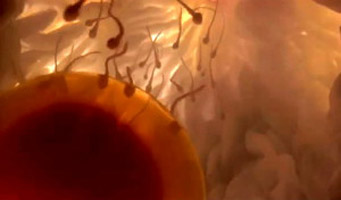It is scientifically undisputed that a new human organism begins at fertilization (or conception). But that hasn’t stopped the American College of Obstetricians & Gynecologists (ACOG)—a proudly pro-abortion “medical” organization—from attempting to mislead courts into believing that life-ending drugs do not actually end the lives of tiny human beings.
ACOG’s efforts come in the many HHS mandate cases that are currently pending before federal courts all over the country, including the U.S. Supreme Court in Hobby Lobby Stores v. Sebelius and Conestoga Wood Specialties Corp. v. Sebelius. In these cases, the plaintiffs are challenging the mandate in the Affordable Care Act (or “Obamacare”) that requires employers to fully cover, without co-pay, all drugs and devices labeled by the Food and Drug Administration (FDA) as “contraception.”
But here’s the problem: the FDA has labeled some drugs as “contraception” that actually work after a new human organism has been created.
 Among many other facts from scientific journals, AUL has consistently cited the following in amicus briefs filed in federal courts in these cases:
Among many other facts from scientific journals, AUL has consistently cited the following in amicus briefs filed in federal courts in these cases:
- “The fusion of sperm and egg membranes initiates the life of a sexually reproducing organism.”1
- “Fertilization is the process by which male and female haploid gametes (sperm and egg) unite to produce a genetically distinct individual.”2
- “Fertilization—the fusion of gametes to produce a new organism—is the culmination of a multitude of intricately regulated cellular processes.”3
Even the National Institutes of Health defines “fertilization” as the process of union of two gametes (i.e., ovum and sperm) “whereby the somatic chromosome number is restored and the development of a new individual is initiated.”
But here is the problem: drugs and devices categorized as “contraception” by the FDA can work after fertilization has occurred. The FDA’s criterion in categorizing a drug as “contraception” is whether a drug can work by preventing “pregnancy”—which the FDA defines as beginning at “implantation,” not fertilization. Thus, drugs that interfere with implantation—which occurs after fertilization and the creation of a new human organism—are categorized as “contraception.” Both Plan B and ella have mechanisms of action which can end the life of a human being after fertilization has occurred.
And here is where ACOG comes in to blur the terminology and confuse the courts. Relying on a definition of pregnancy that begins at “implantation,” ACOG argues that “emergency contraceptives” are not “abortifacients” because there is no “pregnancy.” However, this is a nonresponse to the concern that a drug or device can work after fertilization, by blocking or interrupting the implantation of a developing human embryo.
CLICK LIKE IF YOU’RE PRO-LIFE!
Such drugs might not end a “pregnancy” under ACOG’s definition, but they do end the life of a unique human being.
1 Marsden et al., Model systems for membrane fusion, CHEM. SOC. REV. 40(3):1572 (Mar. 2011) (emphasis added).
2 Signorelli et al., Kinases, phosphatases and proteases during sperm capacitation, CELL TISSUE RES. 349(3):765 (Mar. 20, 2012) (emphasis added).
3 Marcello et al., Fertilization, ADV. EXP. BIOL. 757:321 (2013) (emphasis added).







